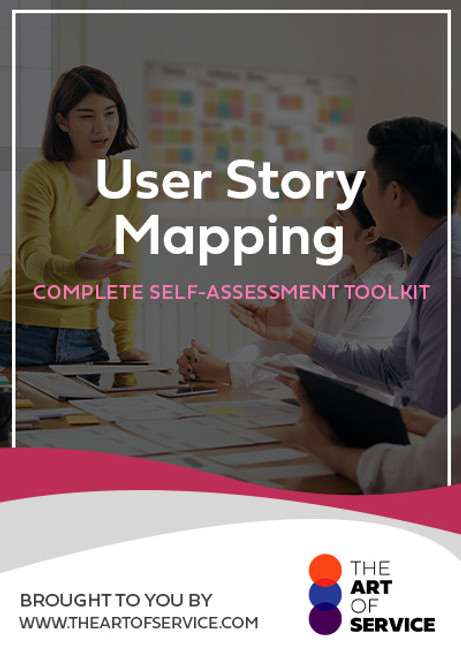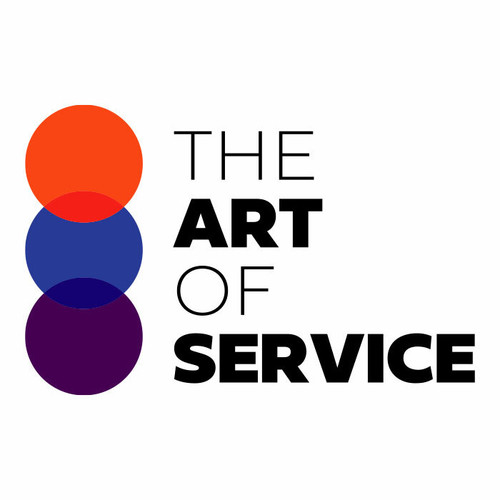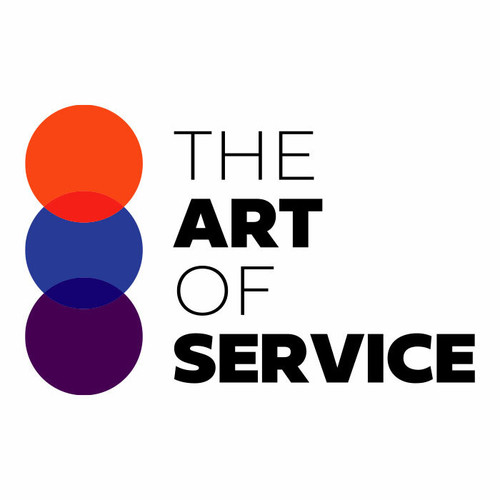Establish User Story Map: research and understand market needs, trends and competitive offerings to identify Strategic Partnerships, go to market strategy and long term revenue growth.
More Uses of the User Story Map Toolkit:
- Organize and facilitate working sessions across scrum teams, as Initiative refinement, dependency and User Story Mapping, and Release Planning.
- Collaborate with client staff, IT, and other stakeholders to identify user requirements, assess available technologies, and recommend solution options according to the customers activities.
- Be certain that your group provides backLog Management leadership and Decision Making (financial and benefit realization accountability), iteration planning, and elaboration of the User Stories.
- Be accountable for soliciting requirements from business, getting Sign Off on scope, delivery schedule, and user acceptance criteria.
- Create user centered designs by understanding Business Requirements, the Voice of the customer, user journeys, Customer Feedback, and usability findings.
- Ensure your organization follows proper Change Management practices as it relates to user administration and client/server side application updates.
- Establish and manage processes that are responsive to resolving user reported issues and maintains and improves system/network operational performance.
- Stay abreast of the latest developments in technology and remain highly technically competent at all levels while striving for enhanced user productivity through implementation of new software technology where applicable, and the implementation of policies that more effectively utilize resources.
- Create and maintain deliverables as business vision, requirements, testing plan, testing schedule, testing scenarios, testing outcomes, user task analysis, wire framing, Usability Testing, personalization to different clients, and user Interface Design.
- Ensure you participate; build custom User Interfaces backed by Blockchain based Smart Contracts to support a variety of architectures or use cases.
- Evolve existing User Interfaces to increase interactivity, intuitiveness, performance and overall user delight.
- Ensure you challenge; build User Stories surrounding your end user interactions and engagements with technology to identify areas of improvement regarding IT support for your new and existing users.
- Assure your organization leads Solution Development efforts that best address end User Needs, while coordinating the involvement of all necessary organization and partner personnel.
- Secure that your enterprise identifies target companies, user groups, professional associations which could inform search parameters.
- Manage end user hardware lifecycle that capacity and variety of assets are available and right sized to business demand while eliminating waste.
- Administer and maintain your organizations internal and Internet e mail systems; install, configure and set up User Accounts and client upgrades; troubleshoot and resolve mail hardware and software problems.
- Ensure you support; lead user story workshops for the definition of use cases, Business Analysis, and Requirements Gathering.
- Be certain that your organization generates stability data according to Ich Guidelines that demonstrates product meet quality attributes in line with user requirements and product shelf life.
- Assure your team complies; documents the new feature based on User Stories for implementations and release notes.
- Arrange that your planning provides backLog Management leadership and Decision Making (financial and benefit realization accountability), iteration planning, and elaboration of the User Stories.
- Write detailed User Stories and supporting docs for task definition at the engineering level.
- Manage the technical team to design, develop, test and deploy Best Of Breed User Interface and Back End Data Integration for new web forms.
- Ensure your strategy provides support for connectivity or related network/communication issues for the User Community.
- Identify User Story Map: Software Development processes eliciting user requirements, analyzing and formally documenting Business Needs, processes and workflows, and using defined formats for functional use cases and Business Rules.
- Analyze user patterns and behaviors with the overall app and the recently released features.
- Maintain Effective Communication with the project Software Engineers to make sure that User Needs, requirements, plans, Verification And Validation documents, Risk Assessments, and other documentation is complete.
- Be the liaison between management, users and Information Technology (IT) if there are end user problems or issues with Security And Compliance programs.
- Warrant that your organization develops and implements CX training tools and initiatives for all User levels and directs the adoption of CX across the system for continued growth of Team Member engagement.
- Provide continuous status updates to Remedy work logs to be viewed by Service Desk Analysts and by the User Community to ensure that accurate and up to date information is available at all times.
- Incorporate Agile, lean, and user centered Design Methodologies to execute on Product Development, implementation and operations.
- Ensure you are an expert at working with cross functional teams, can deal with a lot of ambiguity and synthesize large amounts of information into a clear story that keeps everyone aligned.
- Initiate User Story Map: conduct digital ecosystem audits to map a brands online presence and assess the effectiveness of each touchpoint.
- Gather information relevant to the clients context and conduct detailed analysis using technology solution frameworks.
Save time, empower your teams and effectively upgrade your processes with access to this practical User Story Map Toolkit and guide. Address common challenges with best-practice templates, step-by-step Work Plans and maturity diagnostics for any User Story Map related project.
Download the Toolkit and in Three Steps you will be guided from idea to implementation results.
The Toolkit contains the following practical and powerful enablers with new and updated User Story Map specific requirements:
STEP 1: Get your bearings
Start with...
- The latest quick edition of the User Story Map Self Assessment book in PDF containing 49 requirements to perform a quickscan, get an overview and share with stakeholders.
Organized in a Data Driven improvement cycle RDMAICS (Recognize, Define, Measure, Analyze, Improve, Control and Sustain), check the…
- Example pre-filled Self-Assessment Excel Dashboard to get familiar with results generation
Then find your goals...
STEP 2: Set concrete goals, tasks, dates and numbers you can track
Featuring 999 new and updated case-based questions, organized into seven core areas of Process Design, this Self-Assessment will help you identify areas in which User Story Map improvements can be made.
Examples; 10 of the 999 standard requirements:
- What are the costs and benefits?
- What are the types and number of measures to use?
- Who are the User Story Map decision makers?
- What resources are required for the improvement efforts?
- How do you foster the skills, knowledge, talents, attributes, and characteristics you want to have?
- Who, on the executive team or the board, has spoken to a customer recently?
- Are you satisfied with your current role? If not, what is missing from it?
- How does your organization define, manage, and improve its User Story Map processes?
- What output to create?
- What is your decision requirements diagram?
Complete the self assessment, on your own or with a team in a workshop setting. Use the workbook together with the self assessment requirements spreadsheet:
- The workbook is the latest in-depth complete edition of the User Story Map book in PDF containing 994 requirements, which criteria correspond to the criteria in...
Your User Story Map self-assessment dashboard which gives you your dynamically prioritized projects-ready tool and shows your organization exactly what to do next:
- The Self-Assessment Excel Dashboard; with the User Story Map Self-Assessment and Scorecard you will develop a clear picture of which User Story Map areas need attention, which requirements you should focus on and who will be responsible for them:
- Shows your organization instant insight in areas for improvement: Auto generates reports, radar chart for maturity assessment, insights per process and participant and bespoke, ready to use, RACI Matrix
- Gives you a professional Dashboard to guide and perform a thorough User Story Map Self-Assessment
- Is secure: Ensures offline Data Protection of your Self-Assessment results
- Dynamically prioritized projects-ready RACI Matrix shows your organization exactly what to do next:
STEP 3: Implement, Track, follow up and revise strategy
The outcomes of STEP 2, the self assessment, are the inputs for STEP 3; Start and manage User Story Map projects with the 62 implementation resources:
- 62 step-by-step User Story Map Project Management Form Templates covering over 1500 User Story Map project requirements and success criteria:
Examples; 10 of the check box criteria:
- Cost Management Plan: Eac -estimate at completion, what is the total job expected to cost?
- Activity Cost Estimates: In which phase of the Acquisition Process cycle does source qualifications reside?
- Project Scope Statement: Will all User Story Map project issues be unconditionally tracked through the Issue Resolution process?
- Closing Process Group: Did the User Story Map Project Team have enough people to execute the User Story Map project plan?
- Source Selection Criteria: What are the guidelines regarding award without considerations?
- Scope Management Plan: Are Corrective Actions taken when actual results are substantially different from detailed User Story Map project plan (variances)?
- Initiating Process Group: During which stage of Risk planning are risks prioritized based on probability and impact?
- Cost Management Plan: Is your organization certified as a supplier, wholesaler, regular dealer, or manufacturer of corresponding products/supplies?
- Procurement Audit: Was a formal review of tenders received undertaken?
- Activity Cost Estimates: What procedures are put in place regarding bidding and cost comparisons, if any?
Step-by-step and complete User Story Map Project Management Forms and Templates including check box criteria and templates.
1.0 Initiating Process Group:
- 1.1 User Story Map project Charter
- 1.2 Stakeholder Register
- 1.3 Stakeholder Analysis Matrix
2.0 Planning Process Group:
- 2.1 User Story Map Project Management Plan
- 2.2 Scope Management Plan
- 2.3 Requirements Management Plan
- 2.4 Requirements Documentation
- 2.5 Requirements Traceability Matrix
- 2.6 User Story Map project Scope Statement
- 2.7 Assumption and Constraint Log
- 2.8 Work Breakdown Structure
- 2.9 WBS Dictionary
- 2.10 Schedule Management Plan
- 2.11 Activity List
- 2.12 Activity Attributes
- 2.13 Milestone List
- 2.14 Network Diagram
- 2.15 Activity Resource Requirements
- 2.16 Resource Breakdown Structure
- 2.17 Activity Duration Estimates
- 2.18 Duration Estimating Worksheet
- 2.19 User Story Map project Schedule
- 2.20 Cost Management Plan
- 2.21 Activity Cost Estimates
- 2.22 Cost Estimating Worksheet
- 2.23 Cost Baseline
- 2.24 Quality Management Plan
- 2.25 Quality Metrics
- 2.26 Process Improvement Plan
- 2.27 Responsibility Assignment Matrix
- 2.28 Roles and Responsibilities
- 2.29 Human Resource Management Plan
- 2.30 Communications Management Plan
- 2.31 Risk Management Plan
- 2.32 Risk Register
- 2.33 Probability and Impact Assessment
- 2.34 Probability and Impact Matrix
- 2.35 Risk Data Sheet
- 2.36 Procurement Management Plan
- 2.37 Source Selection Criteria
- 2.38 Stakeholder Management Plan
- 2.39 Change Management Plan
3.0 Executing Process Group:
- 3.1 Team Member Status Report
- 3.2 Change Request
- 3.3 Change Log
- 3.4 Decision Log
- 3.5 Quality Audit
- 3.6 Team Directory
- 3.7 Team Operating Agreement
- 3.8 Team Performance Assessment
- 3.9 Team Member Performance Assessment
- 3.10 Issue Log
4.0 Monitoring and Controlling Process Group:
- 4.1 User Story Map project Performance Report
- 4.2 Variance Analysis
- 4.3 Earned Value Status
- 4.4 Risk Audit
- 4.5 Contractor Status Report
- 4.6 Formal Acceptance
5.0 Closing Process Group:
- 5.1 Procurement Audit
- 5.2 Contract Close-Out
- 5.3 User Story Map project or Phase Close-Out
- 5.4 Lessons Learned
Results
With this Three Step process you will have all the tools you need for any User Story Map project with this in-depth User Story Map Toolkit.
In using the Toolkit you will be better able to:
- Diagnose User Story Map projects, initiatives, organizations, businesses and processes using accepted diagnostic standards and practices
- Implement evidence-based Best Practice strategies aligned with overall goals
- Integrate recent advances in User Story Map and put Process Design strategies into practice according to Best Practice guidelines
Defining, designing, creating, and implementing a process to solve a business challenge or meet a business objective is the most valuable role; In EVERY company, organization and department.
Unless you are talking a one-time, single-use project within a business, there should be a process. Whether that process is managed and implemented by humans, AI, or a combination of the two, it needs to be designed by someone with a complex enough perspective to ask the right questions. Someone capable of asking the right questions and step back and say, 'What are we really trying to accomplish here? And is there a different way to look at it?'
This Toolkit empowers people to do just that - whether their title is entrepreneur, manager, consultant, (Vice-)President, CxO etc... - they are the people who rule the future. They are the person who asks the right questions to make User Story Map investments work better.
This User Story Map All-Inclusive Toolkit enables You to be that person.
Includes lifetime updates
Every self assessment comes with Lifetime Updates and Lifetime Free Updated Books. Lifetime Updates is an industry-first feature which allows you to receive verified self assessment updates, ensuring you always have the most accurate information at your fingertips.







